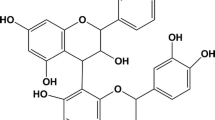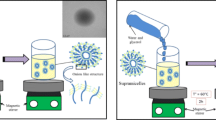Abstract
The aim of this study is the appropriate manufacture of nano-liposome and evaluation of transdermal drug delivery after drug was loaded in liposome for topical site especially nose. To make small, stable, uniform and highly encapsulated nano-liposome, many factors including solvent, stabilizer, pH balance, homogenization speed, sonication time and filtration are critical. Especially, stearate series surfactants have positive effects on liposome size and long-term stability. In this experiment, unsaturated lecithin and Pseudoephedrine HCl (PSE) were selected for the surfactant and model drug, respectively. The unsaturated lecithin, one of the surfactants used to make the liposome, has excellent skin affinity and penetration. Tween 20 and Tween 80, support emulsifying agents, propylene glycol, a lecithin solvent and triethanolamine as stabilizer were also used as materials for liposome. Nano-liposome was made with a high shear homogenizer and pulverized by ultrasonicator to reduce the size and increase uniformity. After that, a transdermal experiment was conducted with Franz-cells on hairless mouse skin and PSE was determined by HPLC. Based on the results of the experiments, when the appropriate concentrations of support emulsifying agent and stabilizer were added, the average size of the liposome was about 300 nm and the encapsulation rate was close up to 40%. Moreover, with faster mixing speed and longer sonication time, more uniform and smaller particles tended to be manufactured. In the skin permeation test, PSE entrapped in liposome had 20 times higher permeability than PSE raw material.









Similar content being viewed by others
References
Aboofazeli R, Zia H, Needham TE (2002) Transdermal delivery of nicardipine: an approach to in vitro permeation enhancement. Drug Deliv 9:239–247
Alvarez-Roman R, Naik A, Kalia Y, Fessi H, Guy R (2004) Visualization of skin penetration using confocal laser scanning microscopy. Eur J Pharm Biopharm 58:301–316
Anton N, Benoit JP, Saulnier P (2008) Design and production of nanoparticles formulated from nano-emulsion templates—a review. J Controlled Release 128:185–199
Bang S, Yu Y, Hwang I, Park H (2009) Formation of size-controlled nano carrier systems by self-assembly. J Microencapsul 26:722–733
Burkoth TL, Bellhouse BJ, Hewson G, Longridge DJ, Muddle AG, Sarphie DF (1999) Transdermal and transmucosal powdered drug delivery. Crit Rev Ther Drug Carrier Syst 16:331–384
Cavallo G, Marchitto L (2001) Pharmaceutical preparation comprising lyophilized liposomes encapsulating an active principle which is highly insoluble in water, and the process for preparing the said preparation. Google Patents
Farokhzad OC, Langer R (2009) Impact of nanotechnology on drug delivery. ACS Nano 3:16–20
Gu X, Li H, Macnair KR, Simons F, Simons KJ (2005) Simultaneous analysis of the H1-antihistamine acrivastine and the decongestant pseudoephedrine hydrochloride by high-performance liquid chromatography. J Pharm Biomed Anal 37:663–667
Jain S, Jain P, Umamaheshwari R, Jain N (2003a) Transfersomes—a novel vesicular carrier for enhanced transdermal delivery: development, characterization, and performance evaluation. Drug Dev Ind Pharm 29:1013–1026
Jain S, Sapre R, Umamaheswari R, Jain N (2003b) Protransfersomes for effective transdermal delivery of norgestrel preparation and in vitro characterization. Indian J Pharm Sci 65:152–160
Juliano R, Stamp D (1975) The effect of particle size and charge on the clearance rates of liposomes and liposome encapsulated drugs. Biochem Biophys Res Commun 63:651–658
Lee J, Wang X, Ruengruglikit C, Gezgin Z, Huang Q (2008) Nanotechnology in food materials research. In: Aguilera JM, Lillford PJ (eds) Food materials science. Principles and practice. Springer, New York, pp 123–144
Liu W, Sun D, Li C, Liu Q, Xu J (2006) Formation and stability of paraffin oil-in-water nano-emulsions prepared by the emulsion inversion point method. J Colloid Interface Sci 303:557–563
Lo Y (2003) Relationships between the hydrophilic-lipophilic balance values of pharmaceutical excipients and their multidrug resistance modulating effect in Caco-2 cells and rat intestines. J Controlled Release 90:37–48
Makhija SN, Vavia PR (2003) Controlled porosity osmotic pump-based controlled release systems of pseudoephedrine: I. Cellulose acetate as a semipermeable membrane. J Controlled Release 89:5–18
Mitragotri S, Blankschtein D, Langer R (1996) Transdermal drug delivery using low-frequency sonophoresis. Pharm Res 13:411–420
Mozafari M (2006) Bioactive entrapment and targeting using nanocarrier technologies: an introduction. In: Mozafari MR (ed) Nanocarrier technologies. Springer, Dordrecht, pp 1–16
Oku N, Kendall DA, Macdonald RC (1982) A simple procedure for the determination of the trapped volume of liposomes. Biochim Biophys Acta (BBA) 691:332–340
Ruan L, Liang B, Tao J, Yin C (1992) Transdermal absorption of nitrendipine from adhesive patches. J Controlled Release 20:231–236
Sagalowicz L, Leser M, Watzke H, Michel M (2006) Monoglyceride self-assembly structures as delivery vehicles. Trends Food Sci Technol 17:204–214
Salerno SM, Jackson JL, Berbano EP (2005) Effect of oral pseudoephedrine on blood pressure and heart rate: a meta-analysis. Arch Intern Med 165:1686
Schneider T, Sachse A, Röbling G, Brandl M (1994) Large-scale production of liposomes of defined size by a new continuous high pressure extrusion device. Drug Dev Ind Pharm 20:2787–2807
Verma D, Verma S, Blume G, Fahr A (2003a) Liposomes increase skin penetration of entrapped and non-entrapped hydrophilic substances into human skin: a skin penetration and confocal laser scanning microscopy study. Eur J Pharm Biopharm 55:271–277
Verma D, Verma S, Blume G, Fahr A (2003b) Particle size of liposomes influences dermal delivery of substances into skin. Int J Pharm 258:141–151
Weiss J, Gaysinsky S, Davidson M, Mcclements J (2009) Nanostructured encapsulation systems: food antimicrobials. Global issues in food science and technology. Academic Press, London, pp 425–480
Wohlrab J, Kreft B, Tamke B (2011) Skin tolerability of transdermal patches. Expert Opin Drug Deliv 8:939–948
Xia S, Xu S, Zhang X (2006) Optimization in the preparation of coenzyme Q10 nanoliposomes. J Agric Food Chem 54:6358–6366
Xuan T, Zhang JA, Ahmad I (2006) HPLC method for determination of SN-38 content and SN-38 entrapment efficiency in a novel liposome-based formulation, LE-SN38. J Pharm Biomed Anal 41:582–588
Author information
Authors and Affiliations
Corresponding author
Rights and permissions
About this article
Cite this article
Park, JB., Noh, Hg., Jung, JH. et al. Enhanced transdermal delivery and optimization of nano-liposome preparation using hydrophilic drug. Journal of Pharmaceutical Investigation 42, 57–63 (2012). https://doi.org/10.1007/s40005-012-0009-4
Received:
Accepted:
Published:
Issue Date:
DOI: https://doi.org/10.1007/s40005-012-0009-4




